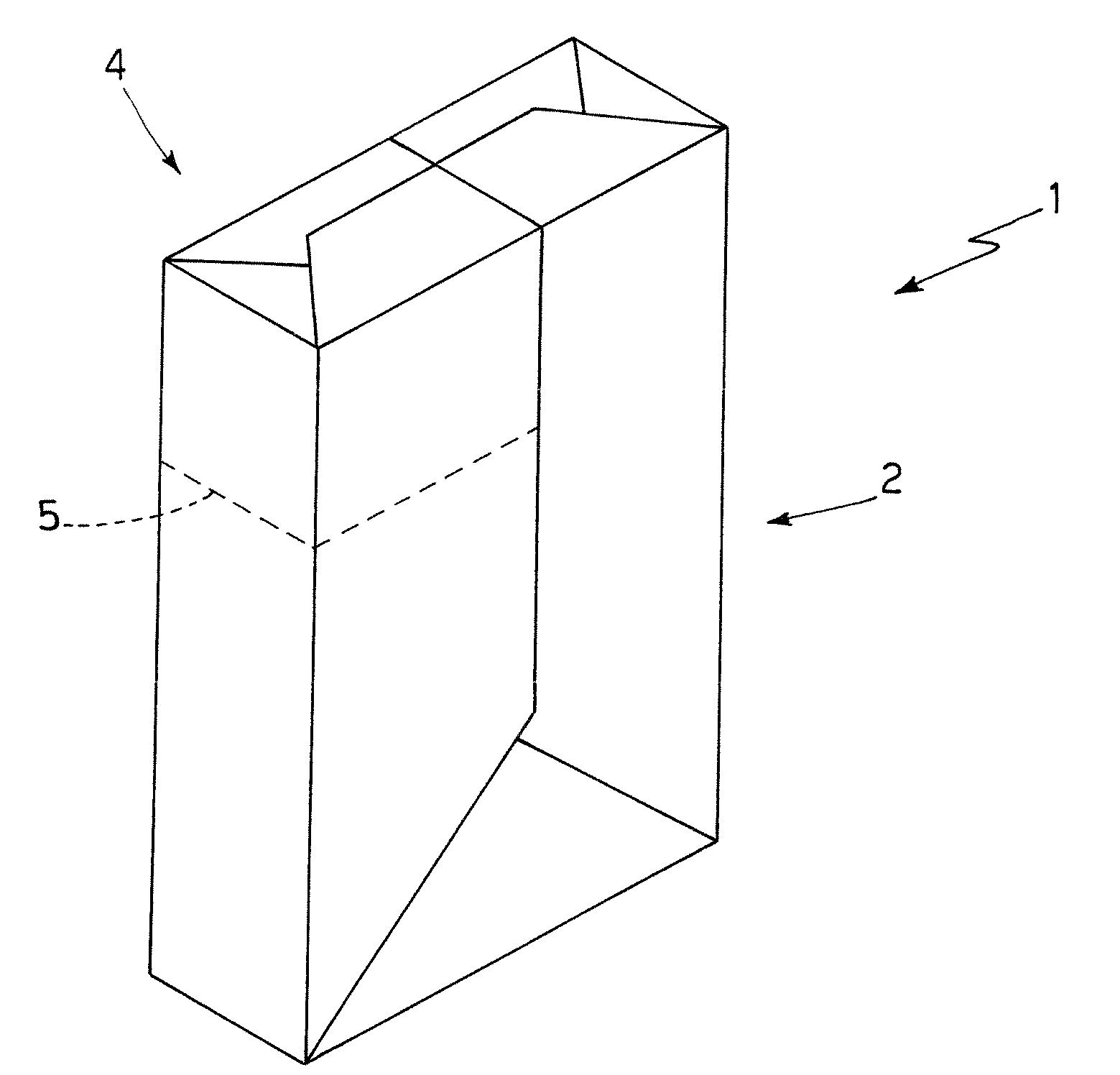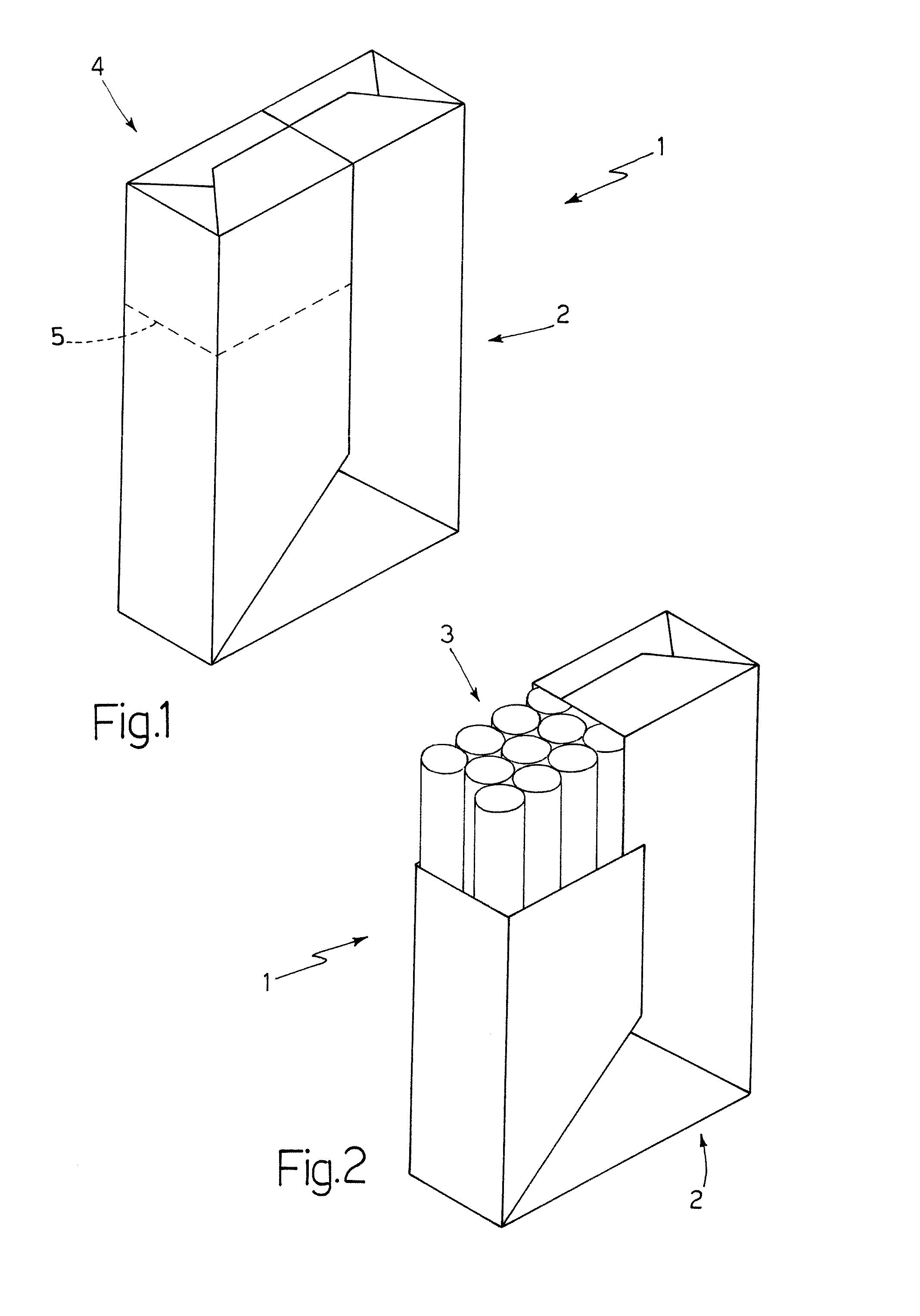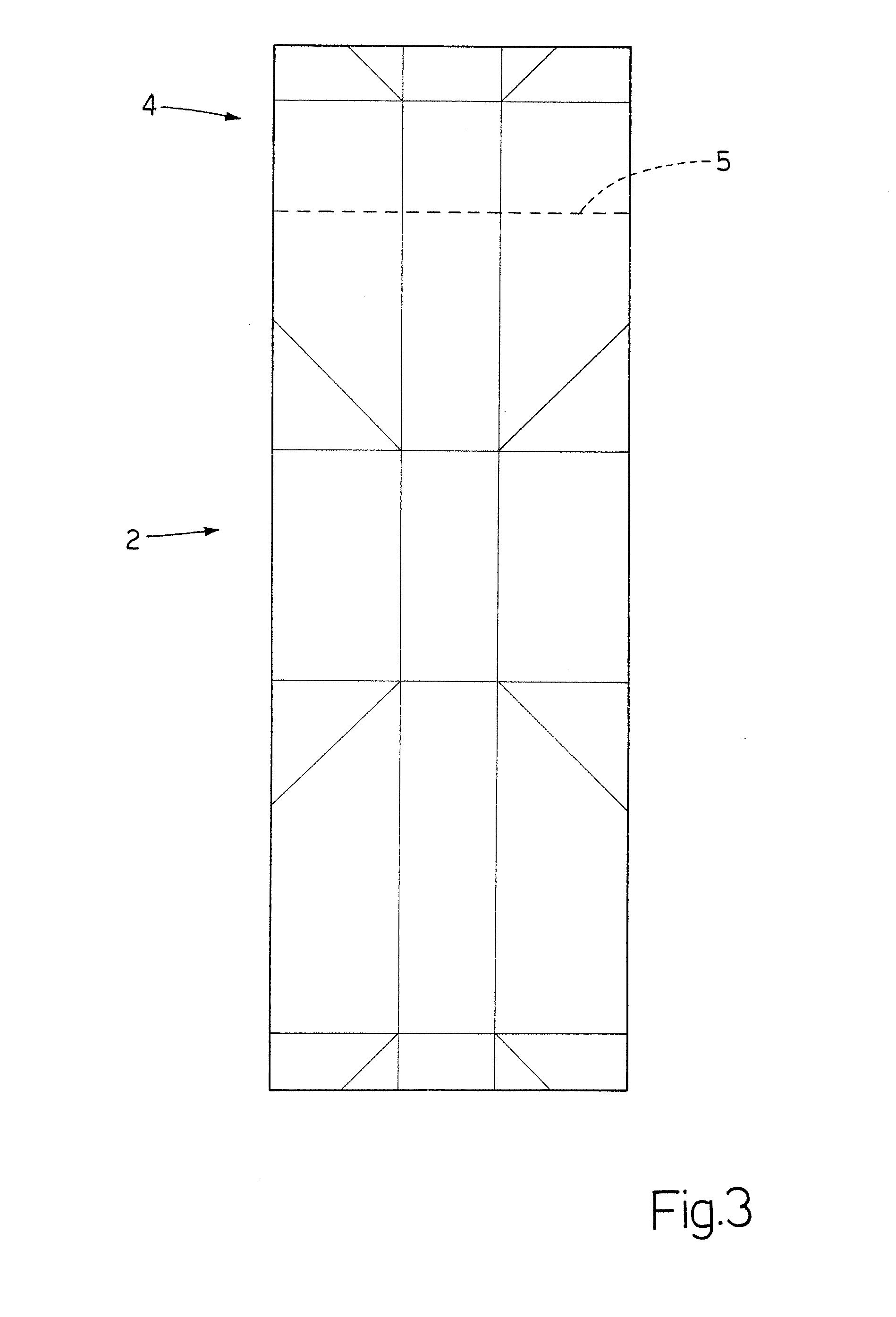Method of folding a sheet of packing material about a group of cigarettes
- Summary
- Abstract
- Description
- Claims
- Application Information
AI Technical Summary
Benefits of technology
Problems solved by technology
Method used
Image
Examples
Embodiment Construction
[0023]Number 1 in FIG. 1 indicates as a whole a package defined by a sheet 2 of foil packing material folded about an orderly group 3 of cigarettes (FIG. 2) in the form of a rectangular-section parallelepiped. Package 1 comprises a tear-off top portion 4 defined by a tear-off line 5, and which, when package 1 is first opened, is tom off to permit easy access to group 3 of cigarettes.
[0024]As shown in FIG. 3, sheet 2 of packing material is in the form of an elongated rectangle, and comprises two parallel opposite long sides, and two parallel opposite short sides.
[0025]As shown in FIG. 4, group 3 of cigarettes is substantially in the form of a rectangular-section parallelepiped, and comprises two parallel, opposite, rectangular major lateral walls 6 (only one shown in FIG. 4) defined by the cylindrical lateral walls of the cigarettes; two parallel, opposite, rectangular minor lateral walls 7 (only one shown in FIG. 4) defined by the cylindrical lateral walls of the cigarettes and smal...
PUM
 Login to View More
Login to View More Abstract
Description
Claims
Application Information
 Login to View More
Login to View More - R&D
- Intellectual Property
- Life Sciences
- Materials
- Tech Scout
- Unparalleled Data Quality
- Higher Quality Content
- 60% Fewer Hallucinations
Browse by: Latest US Patents, China's latest patents, Technical Efficacy Thesaurus, Application Domain, Technology Topic, Popular Technical Reports.
© 2025 PatSnap. All rights reserved.Legal|Privacy policy|Modern Slavery Act Transparency Statement|Sitemap|About US| Contact US: help@patsnap.com



